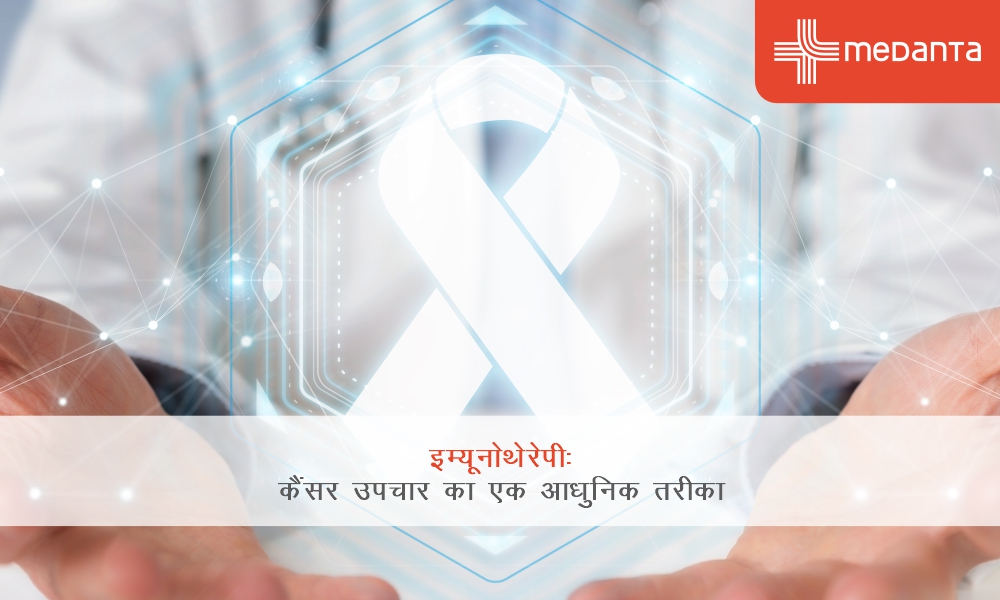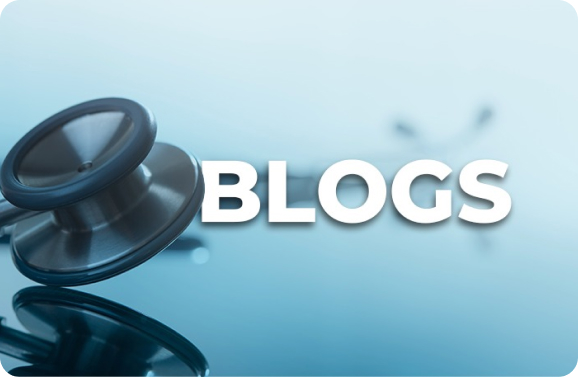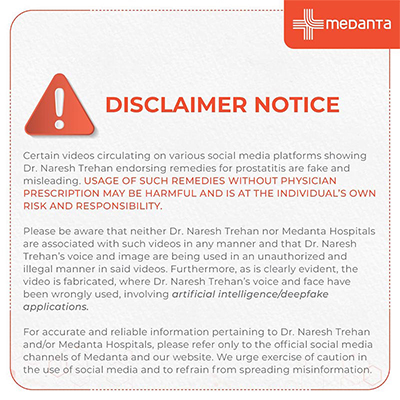How to Identify & Treat Different Types of Headaches Effectively

TABLE OF CONTENTS
Headaches affect almost 40% of people all over the globe and strike individuals of all ages. They may be short and transient or debilitating and long-lasting. The secret to successful relief is to know the different types of headaches and what triggers them. From tension headaches due to stress to migraines brought on by food, each demands a unique strategy for headache relief. This blog will discuss the different types of headaches and what you can do about them.
The Link Between Headaches and Mental Health
Mental health is a dominant factor in the frequency and severity of headaches. Depression, anxiety, and stress have been known to lead to chronic headaches, and chronic headaches may lead to worsening mental health. [1] It is a cycle where emotional and physical health must be treated.
How Mental Health Affects Headaches:
Stress and Tension Headaches: Emotional tension generates muscle tension in the head, neck, and shoulders.
Anxiety and Migraines: Anxiety disorders have a greater threat of migraines since the nervous system becomes over-sensitive.
Depression and Chronic Headaches: Research verifies that depression has the ability to trigger or cause chronic patients to have regular headaches. [2]
13 Types of Headaches and Treatments
Following are the most common types of headaches and reasons and how to do headache treatment at home.
1. Tension Headache
What It Feels Like:
A persistent, aching pain that wraps around the head, typically tightness in the temples and forehead. Some people also experience neck and shoulder stiffness.
Causes:
Anxiety and stress
Poor postures
Computer eye strain
Sleep deprivation
Treatment:
For relief, apply a warm washcloth to your shoulders and neck. OTC medications such as acetaminophen or ibuprofen alleviate minor attacks. For long-term management, you might need stress management exercises, posture strengthening, and practising relaxation techniques such as yoga and deep breathing.
2. Migraine Headache
What It Feels Like:
Severe, throbbing headache, usually on one side of the head. Migraines are often accompanied by nausea, vomiting, and sensitivity to light and noise.
Causes:
Hormonal imbalances
Some foods, such as caffeine, alcohol, chocolate
Bright lights, pungent odours, or loud sounds
Stress and disrupted sleep
Treatment:
A cold pack, resting in a dark room, and drinking fluids may be helpful. Triptans can be given for extremely severe headaches. Magnesium supplements and staying away from triggers can be an effective one-sided headache treatment for migraines.
3. Cluster Headache
What It Feels Like:
A painful, stabbing pain around one eye that occurs in clusters or attacks. Headache is usually accompanied by tearing, watering of the eye, and nasal congestion.
Causes:
Irregular sleep pattern
Smoking and alcohol
High altitude
Treatment:
Cluster headaches should be treated medically. The optimal treatment is oxygen therapy and triptan injections. For headache treatment at home, a regular sleep pattern and the absence of alcohol can halt attacks.
4. Ice Pick Headache
What It Feels Like:
Sudden, stabbing pains that appear at random and only for a few seconds. They can occur randomly on different parts of the head.
Causes:
Nerve irritation
Other headache disorders like migraines
Treatment:
These headaches are not usually serious, but if they occur regularly, a doctor can prescribe indomethacin, an anti-inflammatory drug that stops them.
5. Thunderclap Headache
What It Feels Like:
Sudden, severe headache that reaches maximum intensity in seconds. Frequently described as "the worst headache of my life."
Causes:
Brain aneurysm
Stroke
Hypertensive crisis (extremely high blood pressure)
Treatment:
It's an emergency. If you have a thunderclap headache, you need to go to the hospital. Don't try headache treatment at home for this type.
6. Hormone (Menstrual) Headache
What It Feels Like:
A perimenstrual, premenstrual, or menstrual migraine headache with possible accompanying nausea, photophobia, and fatigue.
Causes
Drop in estrogen levels
Birth control pills
Treatment:
Magnesium supplements, staying hydrated by drinking lots of water, and not drinking caffeine work. If terrible, prescription headache medication is required.
7. Allergy or Sinus Headache
What It Feels Like:
Headache and pressure across the region of the forehead, nose, and cheeks. Hurts more when tilting forward.
Causes:
Seasonal allergies
Sinus infection
Treatment:
Symptoms can be managed by inhaling steam, using nasal saline sprays, and taking antihistamines. If there is an infection, antibiotics will be required.
8. Caffeine Headache
What It Feels Like:
A throbbing, low-grade headache that is experienced after missing the usual intake of caffeine.
Causes:
Caffeine withdrawal
Treatment:
Cutting down on caffeine rather than abstaining from it altogether avoids withdrawal headaches. Proper sleep and staying well-hydrated also help them avoid them.
9. Exertion Headache
What It Feels Like:
A very painful headache is caused after rigorous physical exercise like weightlifting or jogging.
Causes:
Heavy exercising
Dehydration
High blood pressure
Treatment:
Staying well-hydrated and warming up before intense training prevents exertion headaches. If they do occur, a doctor may prescribe NSAIDs like ibuprofen before a work-out.
10. Hypertension Headache
What It Feels Like:
Throbbing headache occurring at the nape of the head that could be worse during the morning hours.
Causes:
Treatment:
Reducing blood pressure by medicine, diet, and exercise is needed. This headache must not be neglected. Hypertension can result in severe complications if left untreated. [3]
11. Rebound Headache
What It Feels Like:
Ongoing, throbbing headache caused by excessive use of pain medication.
Causes:
Daily use of OTC pain medications (more than 15 days/month)
Treatment:
The only true solution is to stop the excessive use of pain medicine. A physician can recommend other therapies and assist in monitoring withdrawal symptoms.
12. Post-Traumatic Headache
What It Feels Like:
Constant headaches following a concussion or head injury.
Causes:
Trauma to the brain
Treatment:
Rest, pain medication, and sometimes physical therapy are necessary. If it gets worse, seek medical help.
13. Spinal Headache
What It Feels Like:
Terrible headache, which is worse standing up but better in bed.
Causes:
Leakage of spinal fluid after a lumbar puncture or epidural
Treatment:
Hydration, caffeine, and flat-lying can be beneficial. In severe cases, a doctor may do a "blood patch" to close the leak.
When to Seek Medical Care for Headaches?
Headaches are typically not dangerous and will resolve with some treatment, but some signal an emergent underlying pathology. Early diagnosis and treatment are based on knowing when to visit a physician.
Symptoms that Require Immediate Medical Treatment
Sudden, extremely severe headache (e.g., thunderclap headache)
Headache that gradually worsens and is not relieved by medication
Neurological symptoms, e.g., change in vision, confusion, or trouble speaking
Headaches after head injury, even if delayed days or weeks later
Frequent headaches that disrupt daily activities or cause distress
If headaches occur frequently, worsen, or with other features such as dizziness, nausea, or unplanned weight loss, a doctor visit is mandatory. While exceedingly rare, in some cases, headaches result from an aneurysm, tumour, or infection. Hence, prompt medical attention is paramount.
Lifestyle Changes to Avert Headaches
While relief for headaches is available through medications and self-managed care, prevention over time often requires a change in lifestyle. Sustained but gradual changes will significantly lower the frequency and intensity of headache attacks.
Effective Preventive Strategies:
Hydration: Dehydration is one of the common causes of headaches. [4] Therefore, drink plenty of water during the day.
Routine Sleep Pattern: Insomnia may result in tension headaches and migraines. [5] Try to sleep 7-9 hours every night.
Routine Exercise: Regular exercise increases blood circulation and decreases stress.
Healthy Diet: Steer clear of processed foods, artificial sweeteners, and too much caffeine. Have a healthy diet full of vitamins and minerals.
Stress Management: Practice stress-relieving techniques such as deep breathing, yoga, or meditation.
By recognising and addressing triggers, you can also reduce headache frequency as well as improve overall well-being.
Final Words
Understanding different types of headaches and their appropriate treatment for headache can make a huge difference in managing pain. Whether you need quick headache treatment at home or medical intervention, knowing your triggers and symptoms is key. If your headaches persist, don’t ignore them; visit your nearest super-specialty hospital as soon as possible!
FAQs
1. How do I know if my headache is serious?
Seek immediate medical attention if your headache is sudden, severe, or accompanied by confusion, vision loss, vomiting, or neurological symptoms.
2. What is the best treatment for headaches at home?
For mild headaches, hydration, rest, a cold or warm compress, and OTC pain relievers can help. Lifestyle changes like stress management and regular sleep patterns are also beneficial.
3. What is the best one-sided headache treatment?
For one-sided headache treatment, lie in a dark, quiet room with an ice pack on your forehead. Magnesium supplements and prescription migraine medications can also help.
4. Can diet affect headaches?
Yes! Processed meats, alcohol, caffeine, artificial sweeteners, and dehydration can trigger headaches. Eating balanced meals and drinking enough water can prevent them.
5. When should I see a doctor for my headache?
If headaches are frequent, severe, or interfere with daily life, consult a doctor. Seek emergency care for thunderclap headaches or headaches with neurological symptoms.
Citations
Arca, K. N., & Halker Singh, R. B. (2021). Dehydration and Headache. Current Pain and Headache Reports, 25(8). https://doi.org/10.1007/s11916-021-00966-z
Duan, S., Ren, Z., Xia, H., Wang, Z., Zheng, T., Li, G., Liu, L., & Liu, Z. (2023). Associations between anxiety, depression with migraine, and migraine-related burdens. Frontiers in Neurology, 14, 1090878. https://doi.org/10.3389/fneur.2023.1090878
Fernández-de-las-Peñas, C., Fernández-Muñoz, J. J., Palacios-Ceña, M., Parás-Bravo, P., Cigarán-Méndez, M., & Navarro-Pardo, E. (2017). Sleep disturbances in tension-type headache and migraine. Therapeutic Advances in Neurological Disorders, 11, 175628561774544. https://doi.org/10.1177/1756285617745444
Wei, C.-B., Jia, J.-P., Wang, F., Zhou, A.-H., Zuo, X.-M., & Chu, C.-B. (2016). Overlap between Headache, Depression, and Anxiety in General Neurological Clinics. Chinese Medical Journal, 129(12), 1394–1399. https://doi.org/10.4103/0366-6999.183410
Zhou, D., Xi, B., Zhao, M., Wang, L., & Veeranki, S. P. (2018). Uncontrolled hypertension increases risk of all-cause and cardiovascular disease mortality in US adults: the NHANES III Linked Mortality Study. Scientific Reports, 8(1). https://doi.org/10.1038/s41598-018-27377-2






